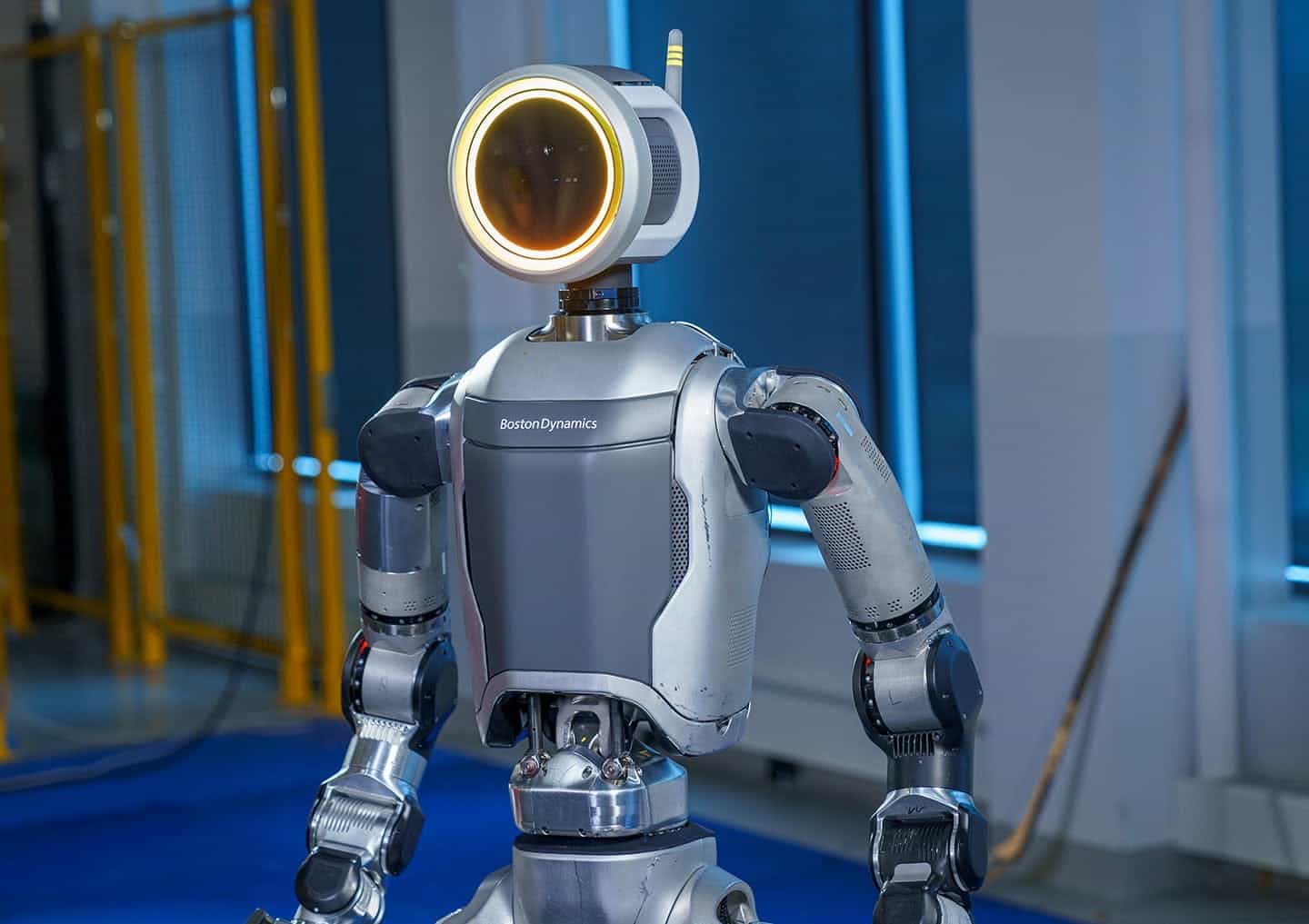Boston Dynamics, a leader in robotics, has unveiled a fully electric and more agile version of its humanoid robot Atlas, designed for real-world applications. This launch marks a significant milestone for the company, as it introduces notable improvements in terms of dexterity and agility, a day after announcing the retirement of its hydraulic predecessor.
The new Atlas features a more streamlined design than its predecessor, highlighted by a ring-shaped head and a structure without exposed cables. This innovative design allows the robot to perform impressive movements, such as standing up from a prone position and rotating its head and torso 180 degrees.
In collaboration with Hyundai, an investor in Boston Dynamics, Atlas will be put to the test in automotive factories. This partnership underscores the commitment of both companies to integrate advanced robotic solutions in automotive manufacturing, leveraging Atlas’ ability to perform tasks that require high mobility and precision.
The launch of the new Atlas not only continues Boston Dynamics’ tradition of showcasing groundbreaking technological demonstrations but also demonstrates a significant shift in the design of humanoid robots. Far from perfectly imitating the human form, Atlas shows that an optimal design can surpass human capabilities in flexibility and mobility, which is essential for industrial and commercial applications.
The transition to a fully electric model reflects Boston Dynamics’ focus on more sustainable and efficient commercial applications. With decades of innovation in robotics and practical experience, the company is poised to tackle the toughest challenges in the industry today, complementing its robotic models Spot and Stretch with the new Atlas.
The humanoid form factor of Atlas offers unique advantages for working in environments designed for humans, but Boston Dynamics has expanded its vision beyond human limitations. Atlas is equipped to move in ways that exceed human capabilities, making it ideal for addressing repetitive, dangerous, or unhealthy tasks that are common in many industrial environments.
Success in commercializing advanced technologies like Atlas requires not only cutting-edge engineering but also patience, imagination, and collaboration. Boston Dynamics has demonstrated its ability to deliver a complete package: industry-leading robotics and a comprehensive ecosystem of software, services, and support to make robots useful in the real world.
In conclusion, Boston Dynamics’ new electric Atlas is not only a testament to the company’s technological evolution but also a glimpse into the future of robotics applied in industry and beyond, where the efficiency and adaptability of robots will open up new possibilities for automation and process improvement across all sectors.

